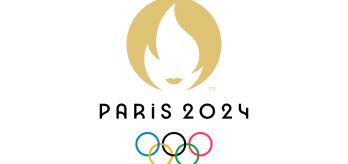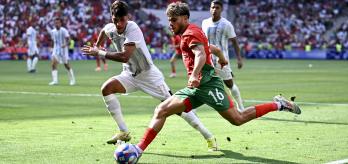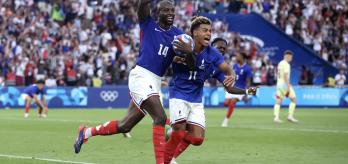With the exception of Japan, all teams included overage players in their squads and in this article, the FIFA’s Technical Study Group (TSG) and Football Performance Insights team explore the impact that some of these players had for their teams.
According to Sue Ronan, “It was interesting to observe how influential some of the overage players were, particularly with the level of experience they brought on to the pitch. With many teams choosing to appoint one of their overage players as captain, the leadership they demonstrated among the younger players was evident. At times they were like additional coaches on the pitch. Sometimes it was advancing play, other times it was slowing it down, but their experience was evident, particularly the impact they had on players around them. It was also interesting to consider why these players were selected by the head coaches from a tactical perspective. It was a really interesting dynamic.”
Many of the overage players selected for their nations are established at both club and senior international level, and the theme of how much they were influencing games emerged very early on in the tournament and continued throughout. Some of the high profile senior players selected for the Men’s Olympic Football Tournament include:
-
Argentina’s Julián Alvarez (24) and Nicolás Otamendi (36);
-
France’s Alexandre Lacazette (33) and Jean-Philippe Mateta (27);
-
Egypt’s Mohamed Elneny (32) and Zizo (28);
-
Guinea’s Naby Keïta (29), Abdoulaye Touré (30) and Amadou Diawara (27); and
-
Morocco’s Achraf Hakimi (25), Munir El Kajoui (35) and Soufiane Rahimi (28).
Adopting a slightly different approach, eventual gold medalists Spain picked overage players with a low average age, as they opted to include Sergio Gómez (23), Juan Miranda (24) and Abel Ruiz (24) – players born only several months after the cut-off date.
How teams leveraged experience
Despite some of the differences in the age profiles, all the players listed above made significant contributions to their team’s performances. Of all 41 overage players registered, 11 played 100% of their team’s minutes in the competition, with 28 playing 75% minutes or more.
Of the 16 teams, 11 brought three overage players (Argentina, Dominican Republic, France, Guinea, Iraq, Israel, Morocco, New Zealand, Spain, USA and Uzbekistan) and four teams listed two (Egypt, Mali, Paraguay and Ukraine), with Japan opting against bringing any over-23s. All teams who brought overage players fielded them, except Dominican Republic and Israel, who only played two of three.
Gemma Grainger felt that the different approaches to how countries used their overage players was indicative to their philosophy.
“When we look at the number of minutes played by overage players, it's clear to see how important these squad members were in terms of each team’s approach. It was interesting that Japan opted against bringing any overage players, demonstrating their commitment to developing players at this age level. Interestingly, Spain’s three overage players (age 23, 24 and 24) were very close to the age cap while other teams brought in older players with more experience, and that too helped to develop and influence the younger players,” she explained.
When we analysed the number of minutes played by each overage player and examined their crucial contributions to their teams, the real impact becomes clear. Morocco’s Soufiane Rahimi played 89.8% of his team’s total minutes in the competition, scoring eight goals (four penalties) and providing one assist. Israel’s Sean Goldberg registered the most receptions of the ball (231), averaging 92 receptions per 30 minutes in possession.
Abdoulaye Touré of Guinea clocked the most forced turnovers per 30 minutes out of possession with 17.8, while Paraguay’s Diego Gómez was the number one ranked player for key distributions, registering 5.1 per 30 minutes in possession.
In the following section, the TSG has identified four overage players that made particularly interesting contributions to their teams, albeit in very different ways.
Morocco’s Soufiane Rahimi
Morocco forward, Soufiane Rahimi, broke Olympic records by becoming the first ever player to score in all six games of a single Olympic edition (Morocco played in the Bronze Medal Match). The Al Ain striker scored eight goals, including four penalties, on his team’s journey to claiming the bronze medal.
The 28-year-old’s goal-scoring form, and overall in-game contribution, was instrumental in Morocco’s medal-winning campaign. In addition, Rahimi provided one assist and was ranked the number one overage player for offers in behind per 30 minutes in possession with 28.3. He also averaged 3.2 attempts at goal per 30 minutes in possession.
According to Grainger, “Rahimi’s goal-scoring record in this tournament was exceptional but his impact on his team went further than just the goals he scored. When Morocco had the ball, the rate of his movement and offers to receive are well-reflected in the data. On the pitch, having a player working like this ahead of the ball makes a real difference to the team in possession and we can see how effective he was in creating goal-scoring opportunities. His mentality and work ethic in the final third of the pitch meant he was always a focal point for his team while he also took responsibility by stepping forward to take and score the penalties.”
Spain’s Sergio Gómez
Real Sociedad winger, Sergio Gómez, was a key player in the performances of eventual Olympic champions, Spain. His dynamic forward play and positional intelligence were fundamental qualities in how his team were able to switch play and exit opposition pressure areas. His ability to lock in opposition right-backs, coupled with his strong playing relationship and understanding with left-back Juan Miranda, meant he was a key player in Spain’s ability to create attacking overloads in the final third.
Gómez played 618 minutes during the Olympics, representing 91.8% of Spain’s total minutes played. He scored one goal and provided one assist and attempted 3.2 defensive line breaks per 30 minutes in possession, completing 80% of all line breaks attempted. Defensively, Gómez worked very hard for his team, completing an impressive ten turnovers per 30 minutes out of possession.
As can be seen in clip 2 below, the quality and accuracy of his left-footed set play deliveries were also important for his team.
As Anna Signeul explains, “His foundation is his technique, and this means he can be versatile for his team. He is an outstanding reader of the game and has game intelligence. He sees opportunities to create spaces and understands how to do it and was often an out-ball option when Spain were working their way out of tight areas under direct pressure from their opponents. As a left-footed player, he can dribble with the ball and has a really accurate passing range which means he has all the attributes to play the link player role in this team.”
France’s Jean-Philippe Mateta
France centre-forward, Jean-Philippe Mateta, plays for Crystal Palace in the English Premier League. The 27-year-old scored five goals during the Olympics and had the highest number of attempts at goal (4.2) per 30 minutes in possession of any overage player (ranked 10th overall in the whole competition) in the whole competition. He played a total of 592.6 minutes (84.7% of France’s total minutes played) and was one of the highest-ranked players for offers to receive in behind the opposition’s defensive line (per 30 minutes in possession) with 25.
As Gemma Grainger explains, “Mateta’s influence in the French team was clear to see and he was a high-impact player on their route to the final. He played a high proportion of minutes and was very influential for his team, particularly in their attacking phases. His movements to receive in behind gave his team-mates dangerous options when looking to play forward, and these runs caused opposition defenders real issues as he looked to stretch their defensive structures. Once he received the ball, he saw the goal early and was efficient in generating attempts at goal in as few touches as possible.”
In clip 3 below, we see an outstanding goal from Mateta. The timing of his run and the quality of his finish cannot be underestimated.
Morocco’s Achraf Hakimi
Paris Saint-Germain right-back, Achraf Hakimi was named as one of Morocco’s three overage players. With over 75 senior appearances to date, the 25-year-old captained his national team during their bronze-medal campaign. Hakimi brought great experience to his side, playing all 636.6 minutes of Morocco’s total time played. In addition, he scored two goals, provided one assist and had an incredible average of 75.3 receptions of the ball per 30 minutes of Morocco’s time in possession.
When they did not have the ball, his contribution was also important, with 11.4 turnovers per 30 minutes out of possession, making him the player with the seventh-highest average in the competition for this metric.
As Ronan explains, “Hakimi’s influence on his team went much further than his in-possession or out-of-possession contributions. In some of their early games, Morocco were playing at very high tempo, but he was able to show his experience and slow the game down at times when it was needed. He was constantly communicating with the younger players but also did the work of winning the ball back and initiating attacks. His quality on the ball meant he could drive forward and get his team out of pressurised situations, using his experience to win free kicks when he found himself isolated higher up the pitch. His game intelligence helped the younger players understand when to speed up the game and when to slow it down and get a breather. He was very influential for his team.”
Summary
Teams selected overage players for different reasons: some picked them for their experience and others for the tactical contributions they could make for their teams. Of the 41 overage players named in their national team squads, only 13 played less than 75% of their team’s total minutes played in the tournament.
Overage players contributed significantly in key offensive and defensive ways however, their experience, game intelligence and leadership qualities stood out for the FIFA TSG from early on in this tournament. The dynamic of including up to three overage players is an interesting one as for some teams, it was like having a coach on the pitch, to help the younger players in their decision-making and game management.





























